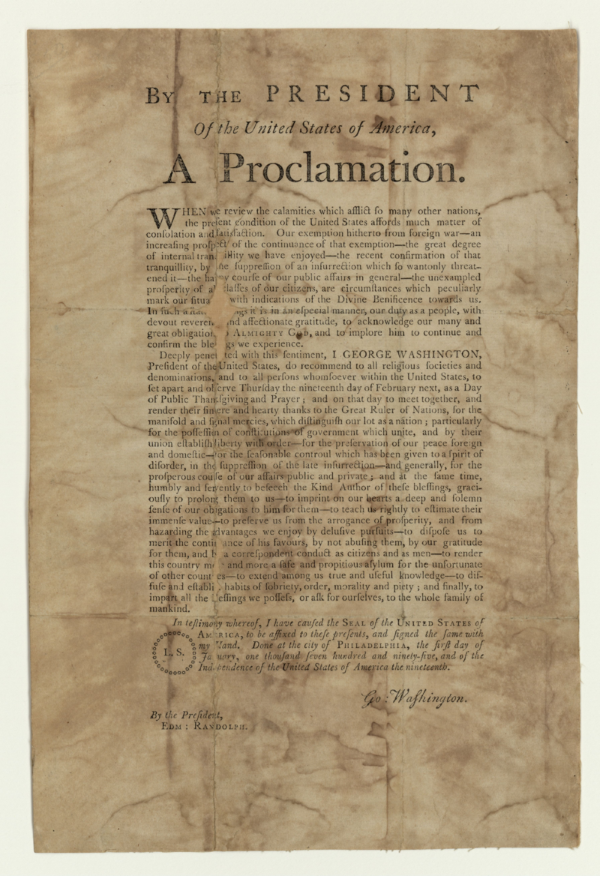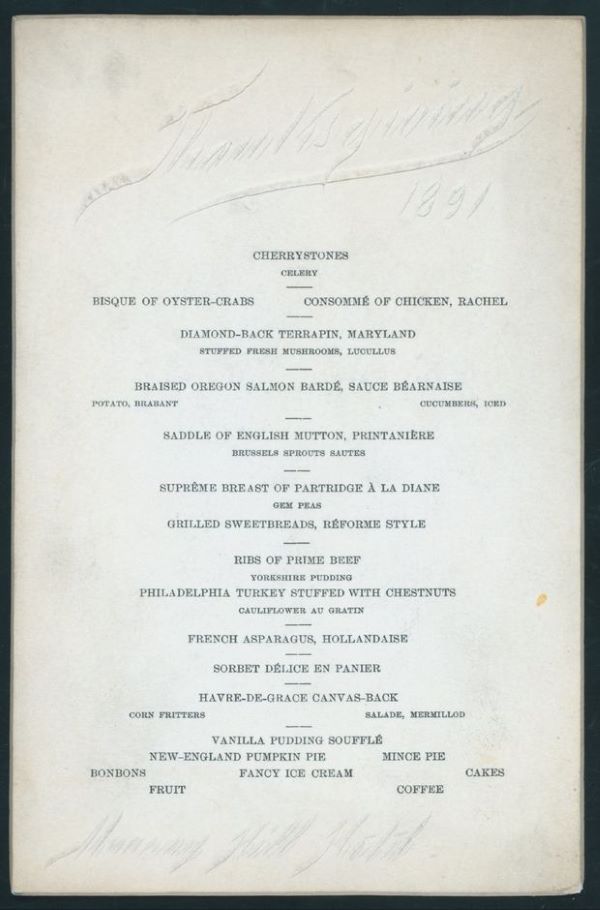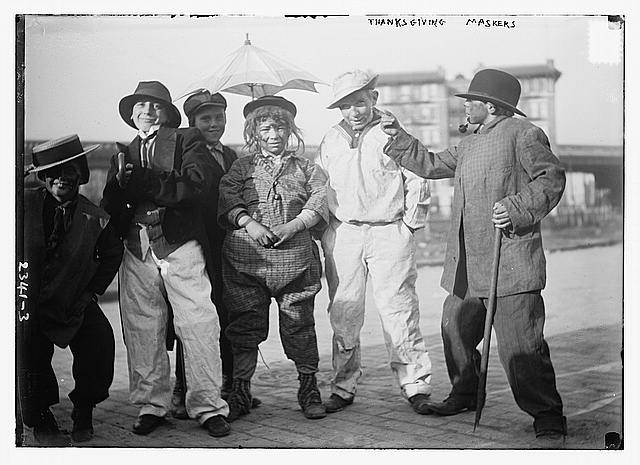100th Anniversary Great Nave Tour at the Cathedral of St. John the Divine
Celebrate the 1925 construction of the stunning nave inside the world's largest Gothic cathedral!


Although many across the country associate Thanksgiving with the Macy’s Thanksgiving Day Parade that traverses much of Manhattan, not many realize that the origins of Thanksgiving are rooted right here in New York City. 232 years ago, New York was the first state to celebrate Thanksgiving and permanently make it a holiday. At the time, the House and Senate wanted to address a day giving public prayer and gratitude for “affording them an opportunity peaceably to establish a form of government for their safety and happiness.”
On November 26, 1789, as per request, George Washington declared the nation’s first Thanksgiving, the fourth Thursday in November, from New York City, the nation’s capital at the time. According to George Washington’s proclamation:
“That we may then all unite in rendering unto him our sincere and humble thanks, for his kind care and protection of the People of this Country previous to their becoming a Nation, for the signal and manifold mercies, and the favorable interpositions of his providence, which we experienced in the course and conclusion of the late war, for the great degree of tranquility, union, and plenty, which we have since enjoyed, for the peaceable and rational manner, in which we have been enabled to establish constitutions of government for our safety and happiness, and particularly the national One now lately instituted, for the civil and religious liberty with which we are blessed; and the means we have of acquiring and diffusing useful knowledge; and in general for all the great and various favors which he hath been pleased to confer upon us.”

At the time, New Yorkers celebrated a now-forgotten holiday: Evacuation Day. The holiday referred to the evacuation of British troops from New York City following the Revolutionary War. The holiday would often rival the Fourth of July in significance, and it was commemorated with the ringing of church bells, the raising of a flag at the Battery, and entertainment at the local tavern. Future generations, though, did not keep up these traditions, instead shifting attention to Thanksgiving.
Although following presidents did not celebrate Thanksgiving as an annual tradition (Thomas Jefferson was skeptical of the idea of divine intervention and therefore did not declare Thanksgiving days), other states did. New York continued to uphold Thanksgiving as a day to remember, and in 1817, New York Governor DeWitt Clinton officially claimed Thanksgiving as a day to celebrate as well. In 1830, the legislature formally announced Thanksgiving as a national holiday.
In 1838, a member of the New York Senate, William Seward, continued the Thanksgiving tradition for the next four years. It was then that the Thanksgiving holiday began expanding nationwide. In 1860, President Abraham Lincoln wanted Seward to become his Secretary of State. But in 1863, Sarah Josepha Hale, American writer, editor, and long-time advocate of the Thanksgiving holiday, made an effort to unify the Northern and Southern states by reaching out to Lincoln, urging him to make Thanksgiving a permanent national holiday.

On October 3, 1863, Lincoln officially announced Thanksgiving, the fourth Thursday in November, as a national holiday, making it America’s third national holiday. After Lincoln’s proclamation of Thanksgiving held on November 24, 1864, New Yorkers made their second Thanksgiving tradition an unforgettable one. As the Daily News first reported, New York’s Union League Club member George Blunt decided to cheer up Union soldiers and sailors in Virginia by providing them with cooked poultry and dessert dishes, such as pies and puddings. Surrounding states followed New York’s example, and New Jersey then posted in The Trenton Gazette and Republican that “every male civilian” should “buy a chicken or turkey for the troops.” The citizens of New Jersey also contributed “$1,500 for the purchase of cigars and tobacco.”
Thankfully, a word from the Northern Press spread around, declaring that any small contribution to the Union soldiers amounted to a lot. Eventually, the Thanksgiving contribution collected a sum of $250,000 in monetary donations. Citizens rounded near their local cities with “abundant dinners” to send to the Union soldiers, but the question arose: How and where could they be sent? New York City solved the problem by summoning the Union League Club, which arranged New York restaurateurs, cooks, and bakers for a giant potluck with at least 20 roasted turkeys and chickens, sending them to a central spot shipped down south.

New Yorkers often gave their all for Thanksgiving celebrations. Many wore exquisite masks and wandered the city’s streets in celebratory mobs. In the early 1900s, Ragamuffin parades were held on Thanksgiving, although this tradition ended soon after. During these parades, children would dress up as beggars and ask neighbors for candy or coins. According to an 1899 edition of the New York Times, “Fantastically garbed youngsters and their elders were on every corner of the city. Not a few of the maskers and mummers wore disguises that were recognized as typifying a well-known character or myth. There were Fausts, Uncle Sams, Harlequins, bandits, sailors. All had a great time. The good-humored crowd abroad was generous with pennies and nickels, and the candy stores did a land-office business.”
As early as 1879, companies and organizations such as the Brooklyn Daily Eagle began taking off work on Thanksgiving. Thanksgiving dinners in New York also did not always feature turkey with stuffing; “diamond back terrapin,” or turtle, was a popular option at restaurants across the city, as well as many seafood dishes like oysters and clams.
Delmonico’s, one of the oldest restaurants in New York City, contributed to the Thanksgiving feast by stuffing and baking thousands of poultry. The infamous Fulton Market contributed the most, as well as other Thanksgiving dinner specialties. By the time supply ships left New York’s port, over 400,000 packaged boxes were en route to supply the soldiers and sailors with Thanksgiving goodness. Although not everything was perfect, many considered the contribution to be a “great success,” and other states soon followed, carrying on the feast of Thanksgiving tradition after New York’s example.
Next, check out 10 Fun Facts About The Macy’s Thanksgiving Day Parade Balloons in NYC!
Subscribe to our newsletter